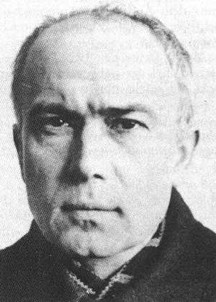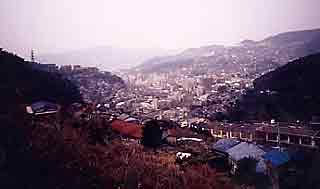|
|
Post by Jaga on Oct 30, 2012 23:15:12 GMT -7
All of you probably know that Maximilian Kolbe gave his life in Auschwitz for somebody else.
Do you know is his link to Japan? What happen during WW II in Nagasaki and how did it affect the monks?
What was the origin of Kolbe's father?
|
|
|
|
Post by pieter on Oct 31, 2012 14:29:59 GMT -7
Maximilian Kolbe Maximilian Kolbe (1894 - 1941) Maximilian Kolbe (1894 - 1941)During the Second World War, Maximilian Kolbe provided shelter to refugees from Greater Poland, including 2,000 Jews whom he hid from Nazi persecution in his friary in Niepokalanów. On 17 February 1941, he was arrested by the German Gestapo and imprisoned in the notorious Pawiak prison in ulica Pawia (Polish for " Peacock Street") in Warsaw. On 28 May, he was transferred to Auschwitz as prisoner #16670.  Auschwitz concentration camp Auschwitz concentration campAt the end of July 1941, three prisoners disappeared from the camp, prompting SS-Hauptsturmführer Karl Fritzsch, the deputy camp commander, to pick 10 men to be starved to death in an underground bunker in order to deter further escape attempts. When one of the selected men, Franciszek Gajowniczek, cried out, " My wife! My children!", Kolbe volunteered to take his place.  SS-Hauptsturmführer Karl Fritzsch SS-Hauptsturmführer Karl Fritzsch Franciszek Gajowniczek  Gajowniczek with Pope John Paul II, holding an image of Kolbe Gajowniczek with Pope John Paul II, holding an image of Kolbe Franciszek Gajowniczek with Pope John Paul II In the cell, he celebrated Mass each day and sang hymns with the prisoners. He led the other condemned men in song and prayer and encouraged them by telling them they would soon be with Mary in Heaven. Each time the guards checked on him, he was standing or kneeling in the middle of the cell and looking calmly at those who entered. After two weeks of dehydration and starvation, only Kolbe remained alive. The guards wanted the bunker emptied and they gave Kolbe a l ethal injection of carbolic acid. Some who were present at the injection say that he raised his left arm and calmly waited for the injection. His remains were cremated on 15 August, the feast of the Assumption of Mary.  Maximilian Kolbe, on a German postage stamp, marked AuschwitzKolbe's link to Japan Maximilian Kolbe, on a German postage stamp, marked AuschwitzKolbe's link to JapanBetween 1930 and 1936, Maximilian Kolbe took a series of missions to Japan, where he founded a monastery at the outskirts of Nagasaki, a Japanese paper, and a seminary. The monastery he founded remains prominent in the Roman Catholic Church in Japan. Kolbe decided to build the monastery on a mountainside that, according to Shinto beliefs, was not the side best suited to be in harmony with nature. When the atomic bomb was dropped on Nagasaki, Kolbe's monastery was saved because the other side of the mountain took the main force of the blast.  By divine inspiration he built his convent in the hills behind Nagasaki. By divine inspiration he built his convent in the hills behind Nagasaki.
Thus it escape the blast of the nuclear bomb.
|
|
|
|
Post by Jaga on Oct 31, 2012 22:33:25 GMT -7
Hi Pieter, thanks for the presentation. I hope that the majority of people know sth about Kolbe since his story was known worldwide. But the link to Japan is not known that well. It is interesting because not only Kolbe's monastery survived but also Franciscan mission in Hiroshima that was really close to the nuclear bomb explosion. It almost sounds like a miracle: historycontroversy.blogspot.com/2011/01/jesuits-who-survived-bomb.htmlThe Jesuits who survived the Bomb But in the midst of this terrible carnage, something quite remarkable happened: there was a small community of Jesuit Fathers living in a presbytery near the parish church, which was situated less than a mile away from detonation point, well within the radius of total devastation. And all eight members of this community escaped virtually unscathed from the effects of the bomb. Their presbytery remained standing, while the buildings all around, virtually as far as the eye could see, were flattened. Fr Hubert Schiffer, a German Jesuit, was one of these survivors, aged 30 at the time of the explosion, and who lived to the age of 63 in good health. In later years he travelled to speak of his experience, and this is his testimony as recorded in 1976, when all eight of the Jesuits were still alive. On August 6 1945, after saying Mass, he had just sat down to breakfast when there was a bright flash of light. Since Hiroshima had military facilities, he assumed there must have been some sort of explosion at the harbour, but almost immediately he recounted: “A terrific explosion filled the air with one bursting thunderstroke. An invisible force lifted me from the chair, hurled me through the air, shook me, battered me [and] whirled me round and round…” He raised himself from the ground and looked around, but could see nothing in any direction. Everything had been devastated. He had a few quite minor injuries, but nothing serious, and indeed later examinations at the hands of American army doctors and scientists showed that neither he nor his companions had suffered ill-effects from radiation damage or the bomb. Along with his fellow Jesuits, Fr Schiffer believed “that we survived because we were living the message of Fatima. We lived and prayed the rosary daily in that home.” |
|